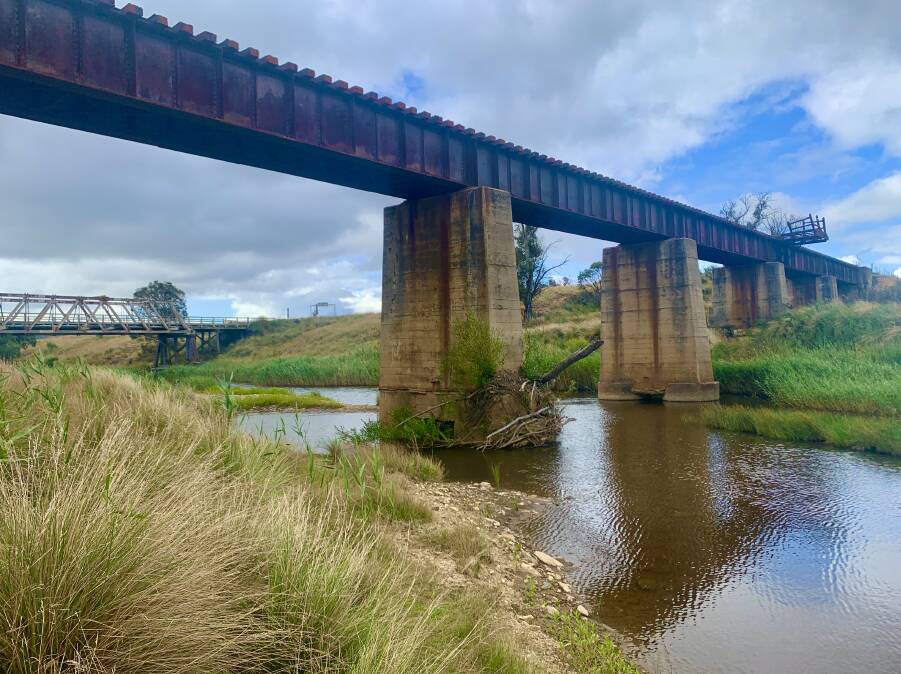
This column receives more than its fair share of curiously titled correspondence. I guess that just comes with the territory when delving into the unusual and quirky.
Still, imagine my shock when an email arrived in my inbox from David Hanzl, senior deputy captain of the Carwoola Rural Fire Brigade, headlined "Foxlow Bridge Bombing" .
For the uninitiated, Foxlow is a quiet rural area in the gently rolling hills between Carwoola and Captains Flat, south-east of Queanbeyan. It's centred around the colonial-era farming station of the same name - hardly the place you'd expect a bridge to be blown to smithereens.
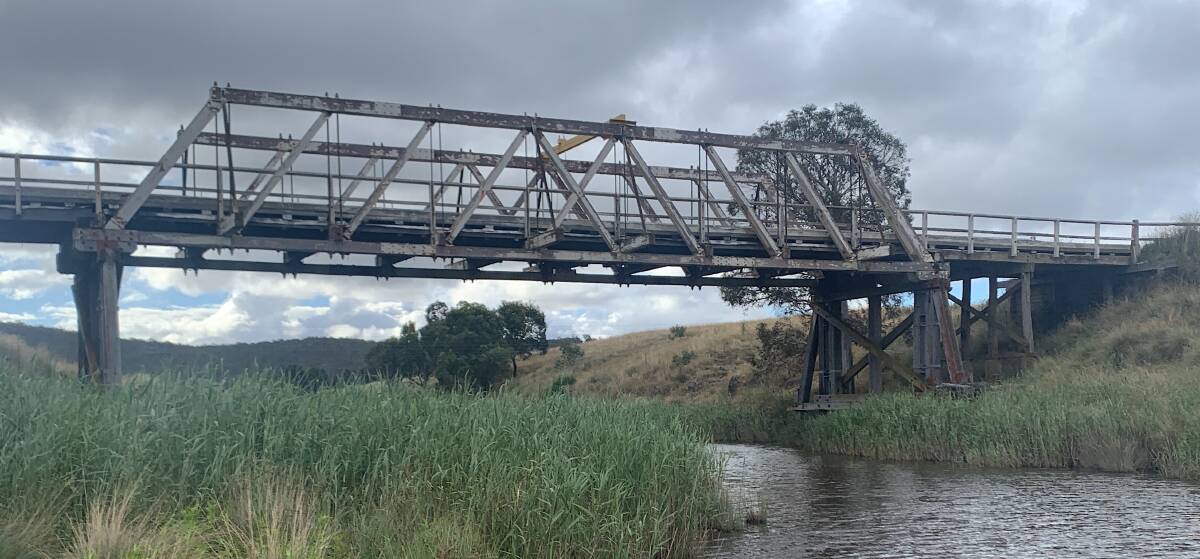
In fact, the only bridge I recall in the area is an aging timber Allan Truss bridge (yes, similar in design to the bridge across the Murrumbidgee River at Tharwa) that takes Hoskinstown Road over the Molonglo River. Although it's desperately in need of some TLC, as one of only 20 or so of the 105 Allan Truss bridges still standing in NSW, it's heritage listed. Surely no one would want to blow that up.
However, as I hastily scan David's missive for more details, I realise he is referring to the much more unassuming bridge on the disused Bungendore to Captains Flat railway, located just 70 metres to the east of the dilapidated road bridge. And what's more, I discover the bombing is an historical one - dating from 1939 during the construction of the bridge. Phew!
David stumbled on details of the extraordinary attempt to blow-up the railway bridge while sifting through reams of old newspaper articles in preparation for a special publication his wife is working on to mark the upcoming 50th anniversary of the Carwoola Rural Fire Brigade.

What's particularly intriguing is that the botched bridge bombing took place during its construction.
"At 1am on 23 January 1939 four workers camped near the bridge were awoken by the muffled thump of an explosion," reveals David. "Confused, the four were just leaving their tents to investigate when a much larger blast shook the whole camp and brought all the other men tumbling out of their beds."
In the darkness, the men were able to make out that one of the concrete piers, more than five metres high, had been fractured at the top, causing a crack about 1.5 metres long.
The Goulburn Evening Penny Post reported that at this point, "a closer examination disclosed a piece of fuse lying on top of the pier, which indicated that two charges had been fired in holes which had been prepared for the insertion of large bridge bolts".
"The men would have had many questions running through their minds," says David. "This clearly looked like an attempt to wreck the bridge." But who had done this? And why? Was this an attack by some politically motivated group? Was it a criminal act aimed at the rail or mining companies at Captains Flat who were the main beneficiaries of the line?
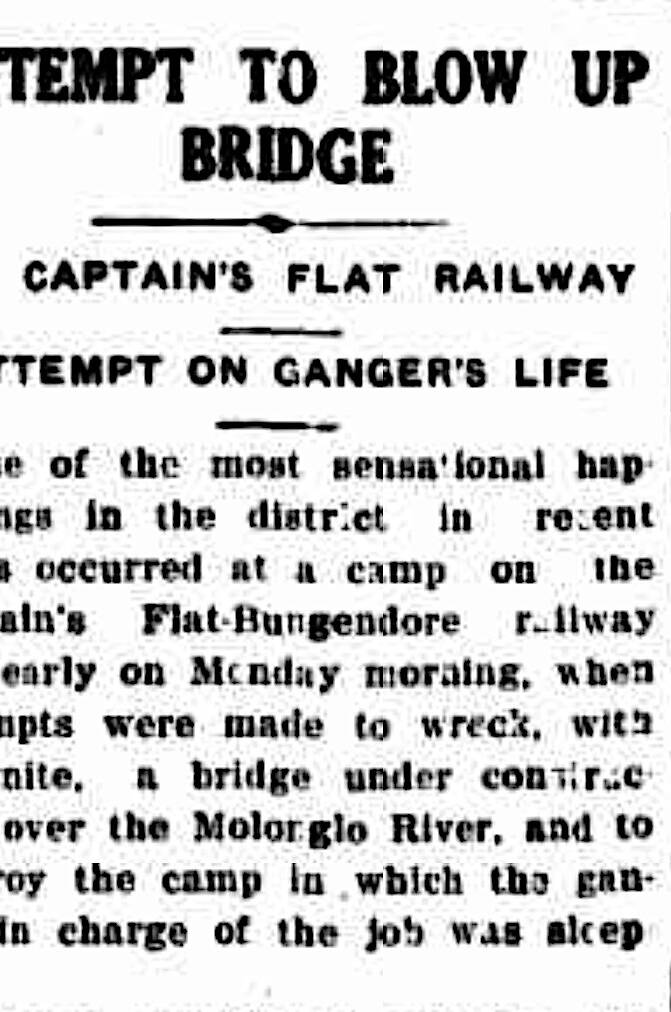
So, where did the explosives come from? According to David, "The workers immediately inspected the camp magazine, where, to their horror, they discovered that the lock had been forced and thirteen plugs (sticks) of gelignite and some 300 detonator caps were gone."
Despite a thorough search of the camp and the surrounding area, nothing was found. Whoever was responsible had clearly made their escape. Silence and darkness returned and the men, mystified, eventually returned to camp.
But the night's shocks were not over.
At 3.16 am, a second loud bang was heard, this time right in the middle of the camp. "This detonation was right behind the foreman's tent, and he was thrown out of his bunk by the explosion, suffering shock but escaping serious injury," says David, adding "a short piece of fuse was found nearby."

A police guard was promptly placed on the camp and patrols were made along the train line. According to David, "The investigators interviewed everyone in the camp and many in the other camps up and down the line. All to no avail. The police could find no motive, no clue as to the culprit, and no person or group claimed responsibility.
"It was a shocking crime committed right here in our area and now it's almost completely forgotten; was it a terrorist act, attempted murder, or something else? As far as we know, the culprit was never identified."
To try and make more sense of the curious crime, David recently invited me to join his investigation. Sure, the trail might be somewhat cold, 83 years after the culprit(s) fled the scene, but that wasn't going to stop us.

While David and his mate Simon, another history hound, meticulously scour the scene, searching for any signs of the explosion, the only anomaly they find is a metal brace on one of the piers that is bolted differently. Hardly a smoking gun.
But what does strikes me in the couple of hours we snoop around the bridge is that not one other person is within cooee, not one other car even attempts to cross the nearby road bridge. It's such a quite backwater of our region and hard to think it was the location of such commotion back on that January night in 1939.
We may never find out the motives for the two explosions nor the masterminds behind the dastardly deed, but investigating such cases can take you to far flung parts of our region and often that's more of a reward than solving the case.
The death knell for Captains Flat railway line

The disused Captains Flat railway which was built to service the mine at Captains Flat has the dubious distinction of being one of the shortest-lived branch lines in the country, open for less than 30 years.
Soon after mining operations began in Captains Flat in 1882, there was a concerted push to build the line, however, successive mine closures, and the Great Depression, delayed the construction of the line until the late 1930s.
Work on the 34-kilometre line finally began in February 1938 with about 600 men employed at work camps along the line which branches off the main Canberra line just a few kilometres south of Bungendore. It passes through Hoskingstown, crosses the plains, and then snakes up the valley to the edge of the Captains Flat village.
The botched bridge bombing in January 1939 only briefly delayed its construction, and the line opened in 1940. Soon after, a small passenger platform was built at Hoskingstown, and a halt at Foxlow for passengers and parcels.
By the end of 1960, improvement in the road from Captains Flat to Queanbeyan resulted in a significant decline in demand for train travel and the dedicated passenger service was discontinued.
Two years later, the closure of the Captains Flat mine signalled the death knell for the line which was closed permanently on August 28, 1968.
About a year later, it temporarily opened for a few weeks as the location for the railway scenes in the Ned Kelly movie starring Mick Jagger. The train scheduled for the film was hauled by Locomotive 1243 but renumbered 176 for the film and fitted with a period kerosene headlamp.
After the Ned Kelly shoot, regular reader of these pages, Neal Gowen of Kaleen reports that his father, Jim, "picked up a handful of old bullet (blanks, of course) casings (pictured) from where the train ambush scene was filmed".
WHERE IN CANBERRA?
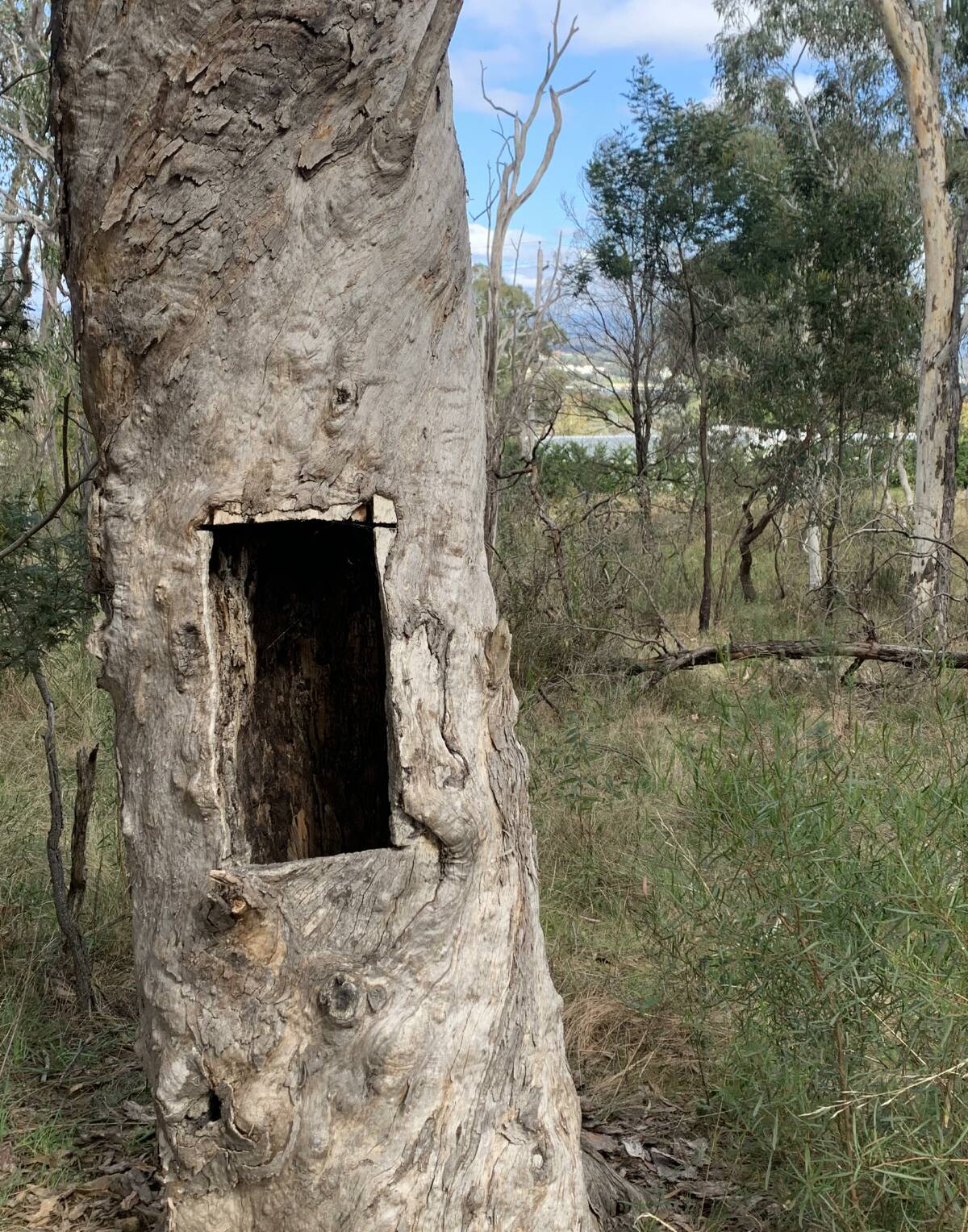
Rating: Hard
Clue: Near a disused quarry. Yes, that's Parliament House in the background.
How to enter: Email your guess along with your name and address to tym@iinet.net.au. The first correct email sent after 10am, Saturday 30 July, wins a double pass to Dendy, the Home of Quality Cinema.
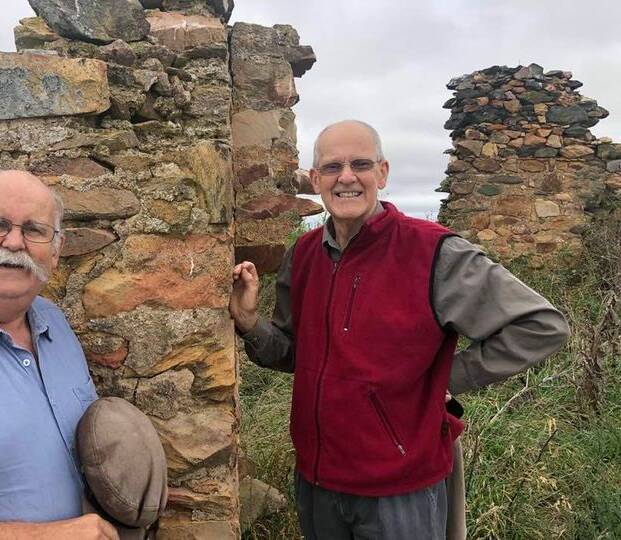
Last week: Congratulations to Jack Palmer of Watson who was first to identify last week's photos as ruins at Kennys Point at the north-eastern end of Lake George. Jack recognised the location from an orienteering course several decades ago. In the photo, Paul Rule and brother Chris are standing in front of the ruins (on private property) of an unfinished building overlooking the lake and commenced by their ancestor Francis Kenny who owned the property from 1834 until his death in 1839. According to the brothers' cousin, Jude Kenny of Melba, "the executor of his will absconded with most of the assets - so, alas, that is why the three of us have had to make our very modest way in this world".
MAILBAG
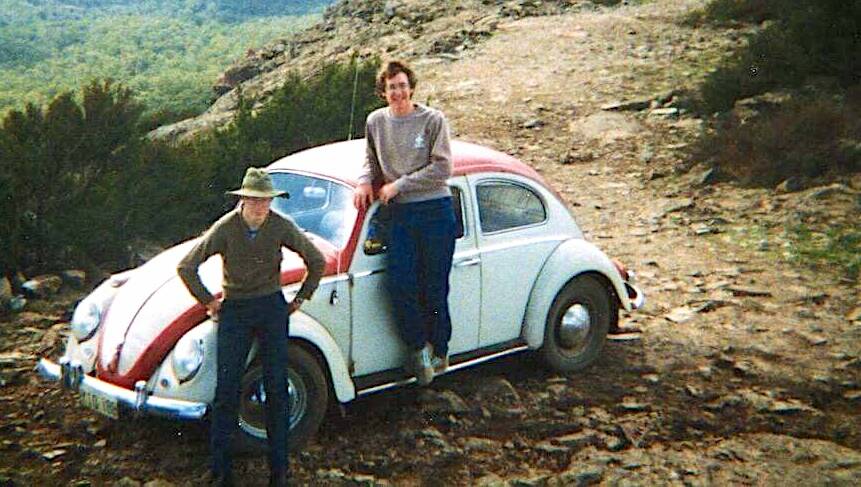
Last week's photos, 40 years apart, of Graeme McKie leaning up against his HR Holden in the driveway outside his former family home in Narrabundah went viral with motoring enthusiasts impressed with Graeme's efforts to take the same photo so long after the first.
It also prompted Steven Lollback of Queanbeyan to submit a different take on the re-photo concept. "Same place, same people, different car," he reports.
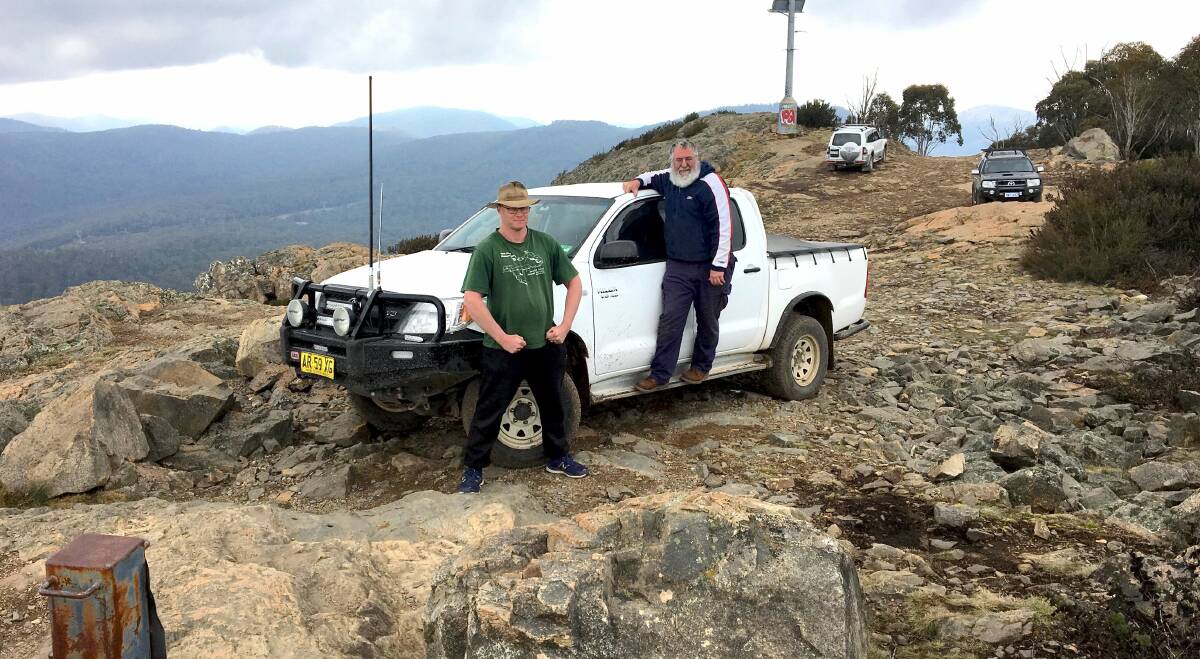
According to Steven, when he and his mate Bill Lamb drove his 1964 VW Beetle up Mt Coree on the ACT/NSW border in the mid 1980s "the road was a lot worse than it is now and along with Graeme Cameron, who took the photo, we had to push it up the last steep bit to the top".
"It was a much easier ascent in 2018 with his 2007 Toyota Hilux," Steven muses. I bet it was. Who pulled off the best re-pose? I think Steven. Just.
CONTACT TIM: Email: tym@iinet.net.au or Twitter: @TimYowie or write c/- The Canberra Times, GPO Box 606, Civic, ACT, 2601







